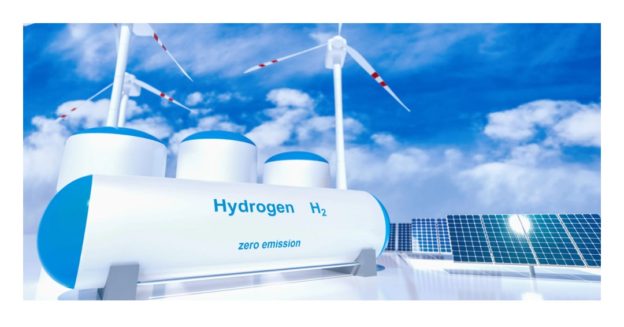In today’s social justice climate, loads of investors are looking for ways to make money while also supporting good causes. Some people simply aim to avoid companies that use sweatshop labor or benefit from the arms trade, while others look to use their investment dollars to support women and minority-owned businesses.
One more option is to invest in stocks that help combat climate change and improve the environment – like green hydrogen stocks, for example.
Climate Change is our New Reality
With so many headlines about disastrous floods, catastrophic wildfires, drought, avalanches, etc, it’s impossible to ignore the impact of climate change. Skiing areas have been shrinking each year and states like California are facing water shortages.
In the wake of COVID-19, environmentalists also point out that climate change is forcing more wildlife to share the same areas as humans, which raises the risks of new and deadly viruses crossing over from animals to humans.
It’s clear that something has to be done, and one of the leading options is to adopt green fuel alternatives.
Green Energy is a Win-Win Choice
Hundreds of countries signed up to the 2015 Paris climate accords, when they pledged to achieve net-zero carbon emissions by 2050, and even more cities have set their own carbon neutral targets. But setting the target is one thing; actually hitting it is another.
Offsetting and cutting emissions isn’t enough to achieve net carbon neutrality within any timeframe if we carry on using the same amount of fuel in our daily lives. Politicians don’t want to have to ask people to travel less, switch to public transportation instead of the car, or turn down their heat or a/c units; and frankly, not many people would comply if they did.
The other option is to replace high-polluting fossil fuels with alternative energy sources that lower carbon emissions without requiring people to drastically change their lifestyles. It means we can still enjoy heating in winter and air conditioning in the summer, low-cost transportation, and other luxuries we can’t live without, but without pushing climate change on even further.
Clearly, that’s a vastly preferable option. National and local governments around the world see green energy in general, and green hydrogen in particular, as the best way to achieve their carbon zero goals.
Enter Green Hydrogen
Among the many green energy options, green hydrogen is one of the most appealing. Hydrogen is abundantly available around the planet in the form of water. It’s converted into fuel using electrolysis to isolate the hydrogen molecules and pass them into a fuel cell. When that electrolysis is powered by renewable energy, it’s called “green” hydrogen, and the process is practically emission-free and results in no polluting by-products.
Although green hydrogen is still more expensive than fossil fuels, that’s changing rapidly. Government incentives to switch from fossil fuels to green energy sources are helping change the cost-benefit ratio, and the basic cost of producing green hydrogen is itself dropping, thanks to tech advances. Renewable energy is becoming more affordable and the supply is increasing, and at the same time, more efficient and lower-cost electrolyzers are being developed.
Green hydrogen is also proving a better green fuel alternative than other options like solar, biomass, and wind power, which are all useful supplements but can’t replace fossil fuels. Nuclear power is another possibility, but the general public is still very uncomfortable with that idea.
Unlike those other options, green hydrogen is energy-dense with a long-duration discharge cycle, which means it can store excess energy easily and release it later at times and places of peak demand. It’s less volatile, so it can form the basis of a more reliable energy grid that will be less prone to blackouts, and it’s a molecule-based fuel, which means it could be suitable for high-polluting industries that can’t use green electricity.
Green Hydrogen has Already Arrived
On top of all that, green hydrogen isn’t just an unproven theory. It’s already in active use in many places and use cases. Hydrogen-powered buses are a reality in places like Scotland, Germany, Poland, and Korea; a number of ports are using hydrogen trucks and heavy vehicles to load and unload shipping containers; and retailers have adopted hydrogen forklifts for their warehouses. Hydrogen-powered planes and ships are under development too.
A number of critical industries like hospitals, water plants, and emergency heating plants have installed private green hydrogen generators, to make sure that they can keep on providing essential services even if the traditional grid fails.
In the US, President Biden’s $4.5 trillion Infrastructure Plan ringfences a significant amount of federal dollars for funding ongoing R&D into green hydrogen and setting up the infrastructure needed to make it accessible across the country. The European Union is also setting aside money to invest in green hydrogen, and so are Asian countries like South Korea, Japan, and China.
If you haven’t yet heard about the investment potential of green hydrogen, you could be a bit behind the times. There are already corporations that are investigating and adopting green hydrogen so that they can display their environmental credentials, and some big investors have put money into the market.
With public opinion in favor, governments doing all they can to support it, and growing profitability, green hydrogen might be one of the most attractive environmental investment options for people who want to do good with their money, and also be part of the cutting edge of tech innovation.
https://finance.yahoo.com/news/green-hydrogen-fuel-could-next-192142067.html





